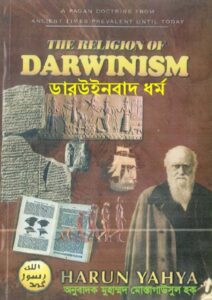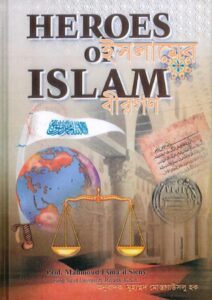
Coal (black gold) – future energy of Bangladesh
11.12. 2010
Coal may be termed ‘black gold’. World’s 50 per cent energy comes from coal. Bangladesh is sleeping on the black gold mine bed located in the northern districts of Rangpur and Dinajpur, while facing a mounting energy crisis and relies on natural gas as the main source of energy, which is depleting at geometrical progression. In contrast, Bangladesh has proven reserve of 3.0 billion tonnes of low sulphur, low ash, high caloric value bituminous coal in five discovered coal mines – Phulbari, Barapukuria, Jamalganj, Dighipara and Khalsapir.
Bangladesh had 15 tcf (trillion cubic feet) of proven reserve of natural gas; the remaining 6 tcf reserve of natural gas may run out by 2015, if no discovery is made soon. As against this, the coal reserves in five fields of Bangladesh are estimated at 3.0 billion tonnes equivalent to 67 tcf of gas, which can conveniently serve the energy needs of Bangladesh for 50 years.
But due to lack of vision, political commitment, indecision and energy mafia’s propaganda we failed to explore and exploit the natural resources to utilise these for economic development. We have miserably failed to cope up with the increasing energy demand of the country. We have age-old mining policy, mining act and mining regulations. We do not have any exploration and utilisation strategy of gas reserve. We are yet to have a coal policy finalised.
Bangladesh government has no other option but to start coal mining without further delaying a single day adopting a technically appropriate, economically feasible and environmentally friendly mining method. We should immediately go for mining in Phulbari and Barapukuria using modern mining technology appropriate to our conditions. If we go for open pit mining, we can extract 90 per cent coal and if we go for underground mining, we can extract only 5.0 per cent coal. The obvious option will be the open pit method. I shall discuss the other advantages of open pit in the later part of this article. Emphasis must be given on this method so that coal mining is safe, economic and environment-friendly. The community of the mine affected people must get properly compensated, relocated to modern city. The mined land may be reclaimed within 10 to 15 years which must be handed over to the original owners.
The concern and propaganda of desertification and massive environmental disaster is illogical. There are hundreds of open pit mines in India. Eighty-eight (88) per cent of electrical power plants of India are coal based. Across our western border there are 273 coal mine fields in Jharkhand, Orissa and West Bengal of which 90 are open pit. The number of total mine fields in India is 562. India has not become a desert. South Africa, Poland, China, Australia and USA have not become deserts though they use their own mined coal to the tune of 49 per cent to 93 per cent for power generation.
Coal Reserves in Bangladesh
| No | Place/Field (Discovery) | Depth (metre) | Area (sq km) | Estimated Reserve (million tonnes) |
| 1 | Barapukuria, Dinajpur (1985) | 119-506 | 6.68 | 390 |
| 2 | Khalsapir, Rangpur (1995) | 257-483 | 12.00 | 143 (GSB), 685 (Hosaf) |
| 3 | Phulbari, Dinajpur (1997) | 150-240 | 30.00 | 572 |
| 4 | Jamalganj, Jaipurhat (1965) | 900-1000 | 16.00 | 1050 |
| 5 | Dighipara, Dinajpur (1995) | 327 | Yet to be known | 200 |
The above chart shows the details of coal in Bangladesh. The depth of the discovered fields ranges between 119 – 506 metres and 150 – 240 metres in Barapukuria and Phulbari respectively. The depth of the largest field at Jamalganj ranges from 900 – 1000 metres. The area covered by coal fields is rather limited and is about 70 – 80 square kilometres. The total coal deposit is 3.0 billion tonnes. A total of 1.73 million tonnes of coal has been extracted by underground method from Barapukuria up to December 2008. The present value of coal per tonne in international market is for steam coal US$ 65-115, coking coal US$ 250, metallurgic coke coal US$ 525. The total value of coal will be more than US$ 500 billion.
Choice of Method:
The method of mining depends on several things – geology, soil conditions and nature, nature of overburden, hydrology, depth, thickness and nature of coal seam. Barapukuria underground mining initiative was not an appropriate choice. The mine has a strong aquifer above coal layer and does not have strong roof support for underground mining. The feasibility study, according to many, was not properly done. Prior to commencement of mining at design stage risk analysis and HAZOP (Hazard and Operability) analysis were not properly done. It has been established by now that underground mining at Barapukuria was a technical blunder and an engineering crime. All kinds of mine disasters – flooding due to water ingression, spontaneous combustion of coal and release of lethal carbon monoxide and explosive methane gas, huge land subsidence, coal dust and excessive heat and humidity in the mine atmosphere, and rock bump and sudden caving etc. in a coal mine have taken place there. Bangladesh had to sink more than Tk 20 billion (2,000 crore) for mining at Barapukuria, where no further mining based on the present underground long wall mining is feasible after the current phase is completed. All these evidences justify that open pit mining was an appropriate choice for Barapukuria. We must not do the same mistakes in Phulbari and must go for open pit. The experiences of Barapukuria and Phulbari will dictate what will be the course for Jamalganj and other mine fields. Ultimately the energy ministry has understood the mistakes and planned to take up a pilot project for open pit mining in Barapukuria.
Effects of Mining:
Mining of coal and burning coal have definite environmental and social impacts. Coal mining releases approximately twenty toxic chemicals of which 85 per cent is said to be managed on the site. Coal mining produces carbon dioxide (CO2) and methane, potent greenhouse gas causing climate change and global warming. It creates acid rain, acid rain drainage (ARD), dusts, and mercury emissions and interferes with the ground water and water table levels, rendering land unfit for use and pollute air.
Modern scientific methods have been evolved to manage these bad impacts. Water is treated and re-cycled for proper use. Dust is suppressed by water sprinkling. Top soil preserved separately is placed on the top again when land is reclaimed. Thus the management of water, air and land is done.
Coal Mine Act:
Bangladesh government must update and adopt a Coal Mine Act and Coal Mine Rules and Regulations immediately for the development and operation of coal mines and create an Inspectorate of Mines. The Inspectorate of Mines, which is to be headed by the Chief Inspector of mines, will regularly monitor, observe, make examination and enquire whether the provisions of the Mine Act and Mine Rules and Regulations and the bye-laws are observed in the mines.
The Coal Mine Act and Coal Mine Rules and Regulations must cover the following provisions:
a. Effective management and control of the mine including operation and maintenance of roadways, coal faces etc.
b. Shaft sinking operation,
c. Fire prevention and control,
d. Precautions in vertical bunkers,
e. Protection against accidents,
f. Strata control,
g. Protection against outburst,
h. Protection against explosion,
i. Respirable coal dust control,
j. Protection against inrushes of water,
k. Protection against spontaneous combustion,
l. Control of temperature,
m. Control and prevention of poisonous gases, noises,
n. Safety in shafts and windings,
o. Safety lamps,
p. Safety of ventilation systems,
q. electrical regulations and applications.
We are following the foreign mine act and regulations which are not suited to our interest. A professional mining education and training institute for the environmentally and socially sustainable development of Bangladesh coal sector may be established. A Mining Faculty may be opened in Haji Danesh Science and Technology University in Dinajpur and a Polytechnic Institute may be set up around that area.
Recommendations:
a. We should immediately go for coal mining for economic development of the country.
b. Mined coal should be used for electrical power generation near mine area to solve the nagging energy crisis.
Mined coking coal (30 per cent), found suitable for making metallurgic coke coal, may be used for steel making in blast furnace to derive maximum economic benefit. Iron ores may be imported from Indian state of Orissa. Steel mills may be established in the mine area.
d. No export of coal. We should develop coal based industry so that mined coal can be fully utilised.
e. We should float Bangladesh Coal Mining Company for mining coal. A public-private partnership mining company may be established for close monitoring and checking probable exploitation.
f. As we have no experience and expertise, foreign mining companies may be invited for coal mining in the first phase and prevented from taking away the lion’s share.
g. People in the mining area should be properly and adequately rehabilitated and compensated.
h. Open pit method for mining will be appropriate and most suitable for Phulbari and Barapukuria coal mines.
i. Social environmental impact management should be taken care of.
j. Bangladesh government must get proper royalty, excise duties, taxes, fees, VAT etc.
(The author is a mechanical engineer and was a sub-sector commander in War of Liberation.)
https://www.thefinancialexpress-bd.com/print_view.php?news_id=116079









